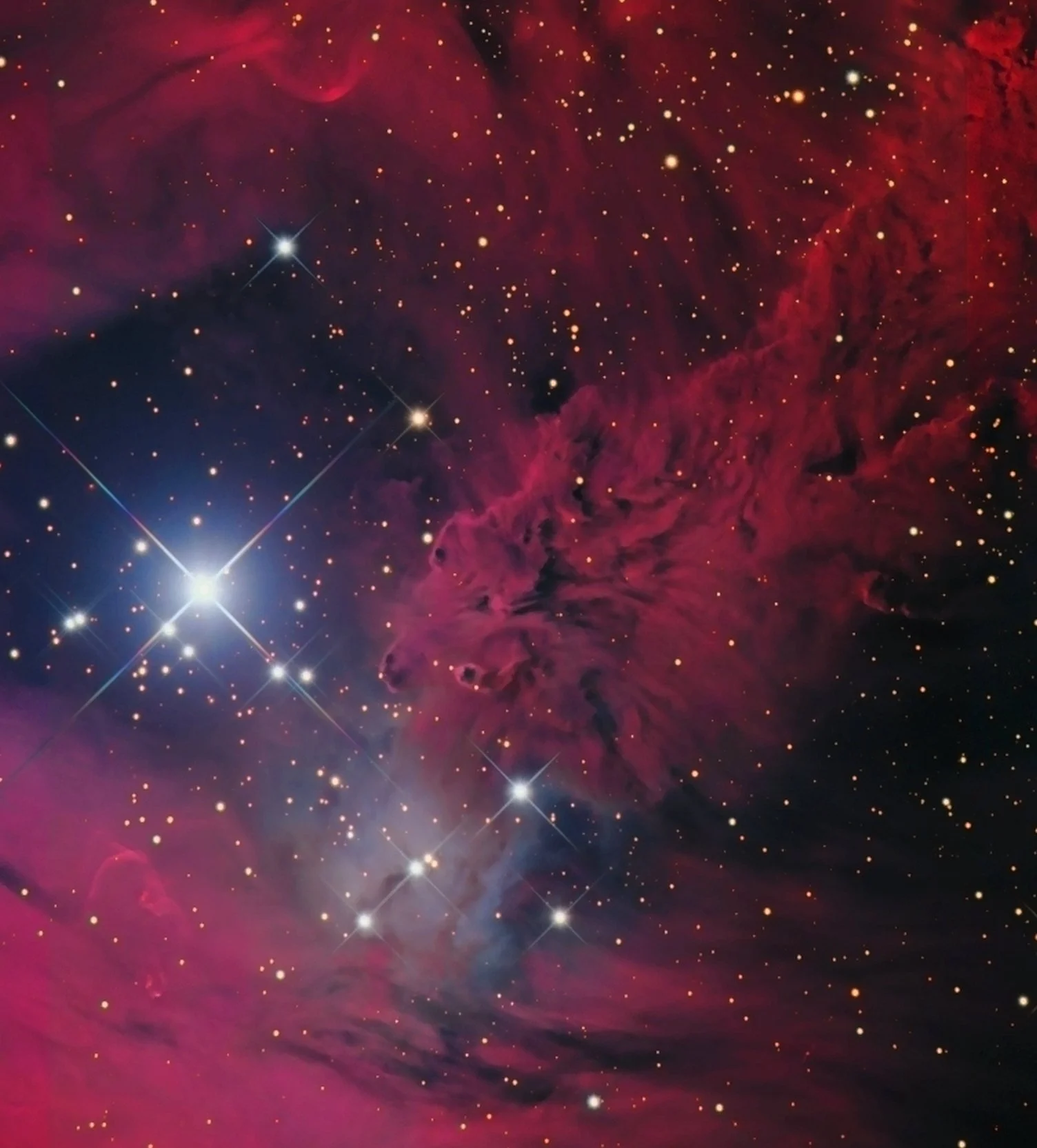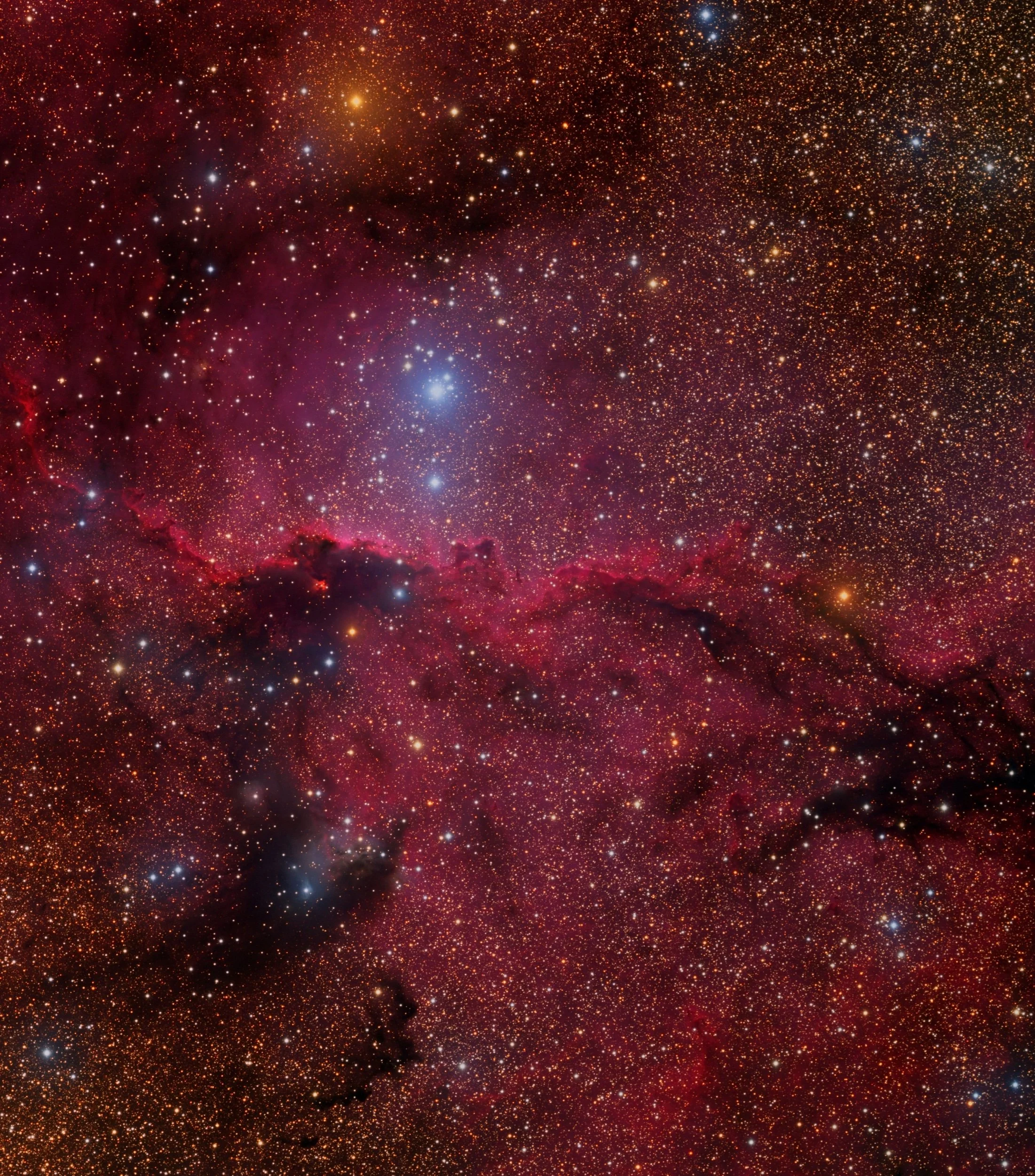
AAPOD2 Image Archives
The Crab Nebula
Image Description and Details : The Crab Nebula (catalogue designations M1, NGC 1952, Taurus A) is a supernova remnant in the constellation of Taurus. Corresponding to a bright supernova recorded by Chinese astronomers in 1054, the nebula was observed later by English astronomer John Bevis in 1731. The nebula was the first astronomical object identified with a historical supernova explosion.
At an apparent magnitude of 8.4, comparable to that of Saturn's moon Titan, it is not visible to the naked eye but can be made out using binoculars under favourable conditions. The nebula lies in the Perseus Arm of the Milky Way galaxy, at a distance of about 6,500 ly from Earth. It has a diameter of 11 ly.
At the center of the nebula lies the Crab Pulsar, a neutron star 28–30 kilometres across with a spin rate of 30.2 times per second, which emits pulses of radiation from gamma rays to radio waves.
Copyright: Ruben Barbosa
Fox Fur Nebula
Image Description and Details : ASA Astrosysteme ASA20NG-OK3 f 3,6, FLI PL16083
Frames: H-Alpha: 35×1200″(11h 40′), Lum: 60×600″(10h), RGB: 75×600″(12h 30′). Integration: 34h 10′.
The Fox Fur Nebula is a nebula (a formation of gas and dust) located in the constellation of Monoceros not far off the right arm of Orion and included in the NGC 2264 Region.
The image is a close-up of a small section of a much larger complex, generally known as the Christmas Tree cluster. The Cone Nebula is also a part of this same cloud.
The red regions of this nebula are caused by hydrogen gas that has been stimulated to emit its own light by the copious ultraviolet radiation coming from the hot, blue stars of the cluster. The blue areas shine by a different process: they are mainly dust clouds that reflect the bluish light of the same stars.
Its popular name arises because the nebula looks like the head of a stole made from the fur of a red fox.
Copyright: Chilescope / Ruben Barbosa
The Dragons of Ara (NGC6188)
Image Description and Details : Takahashi TOA-150, FLI ML16200, Astro-Physics AP1600 with Encoders
Frames: Red: 24x900", Green: 14x900", Blue: 19x900", Lum: 24x900", Integration: 20h 15'.
Dark shapes with bright edges winging their way through dusty NGC 6188 are tens of light-years long. The emission nebula is found near the edge of an otherwise dark large molecular cloud in the southern constellation Ara, about 4,000 light-years away.
Copyright: Deep Sky West Remote Observatory / Ruben Barbosa




